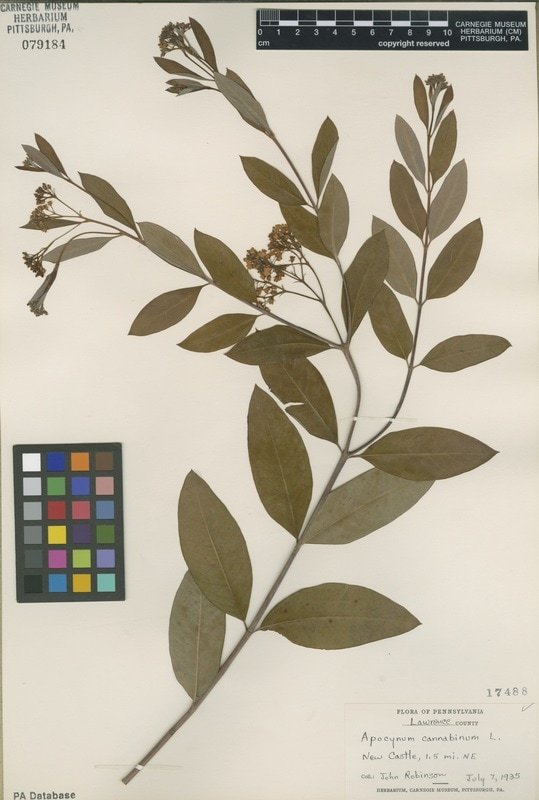
Collected on July 7, 1935, this specimen was found by John Robinson near New Castle, PA. Hemp dogbane (Apocynum cannabinum) are important food plants for moth and butterfly larvae, and like other plants in the milkweed family, this plant is poisonous. Its milk-like, sticky, latex sap contains cardiac glycosides that causes heart problems, rapid pulse, vomiting, and possible death. This is especially of concern to pets and livestock, although dogbane is generally avoided. Hemp dogbane has a rich ethnobotanical history by Native Americans – its bark having been used for fiber (hence the “hemp” part of name), and roots, seeds, or leaves used for medicines to treat a wide variety of ailments. Hemp dogbane can be found in sparely wooded areas, ditches, and field edges across United States.
Botanists at Carnegie Museum of Natural History share pieces of the herbarium’s historical hidden collection on the dates they were discovered or collected. Check back for more!
Mason Heberling is Associate Curator of Botany at Carnegie Museum of Natural History.
Carnegie Museum of Natural History Blog Citation Information
Blog author: Heberling, MasonPublication date: July 6, 2017
